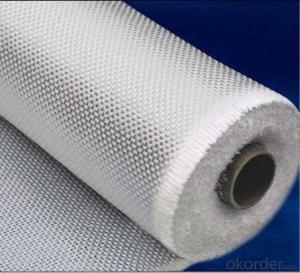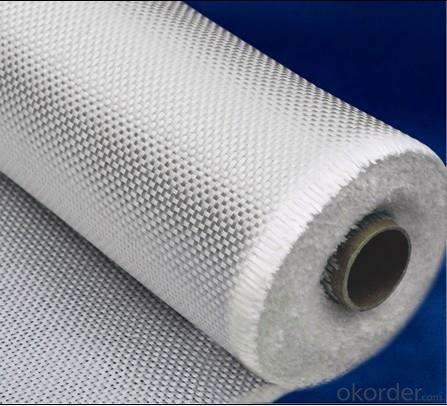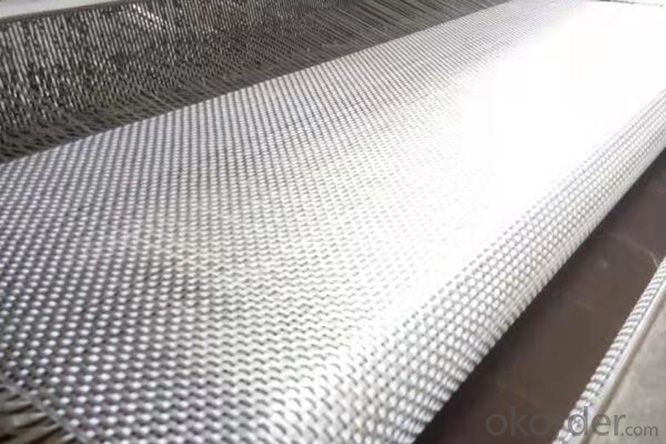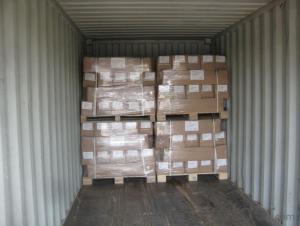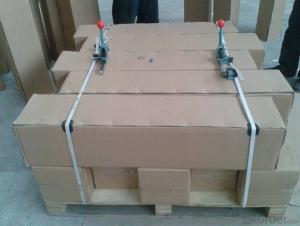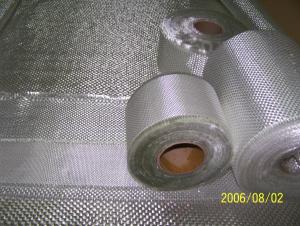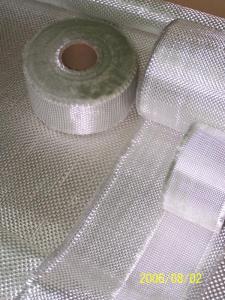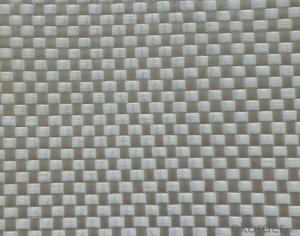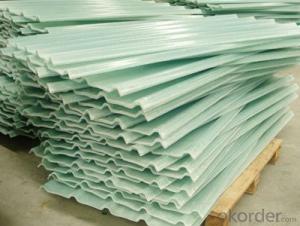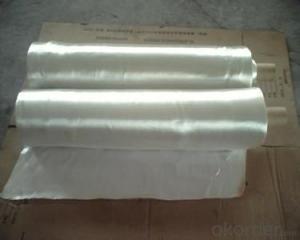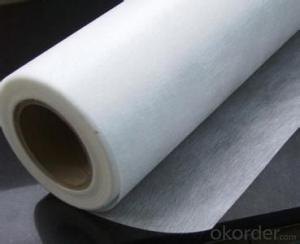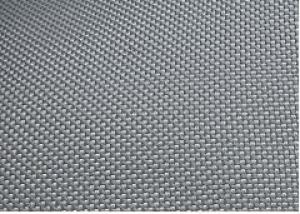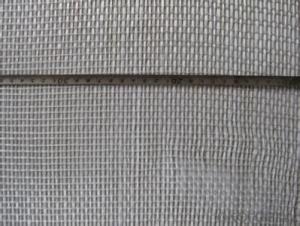E-GLASS FIBERGLASS WOVEN ROVING FABRIC EWR600
- Loading Port:
- Qingdao
- Payment Terms:
- TT OR LC
- Min Order Qty:
- 100 kg
- Supply Capability:
- 1000000 kg/month
OKorder Service Pledge
OKorder Financial Service
You Might Also Like
Specification
EWR600 woven roving from E-glass direct roving by weaving machines.
Applicable for hand lay-up process, mould pressing, machinery formation.
Compatible with unsaturated polyester resin and vinyl resin.
【Characteristics】 【Product code】
Thickness steady EWR600-1000
Free of contamination E E-glass
Fast wet out WR woven roving
High laminate strength 600 unit weight(g/m2)
Good mechanical properties 1000 net width of fabrics(mm)
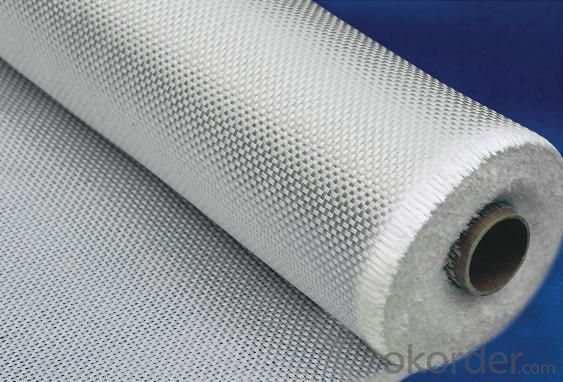
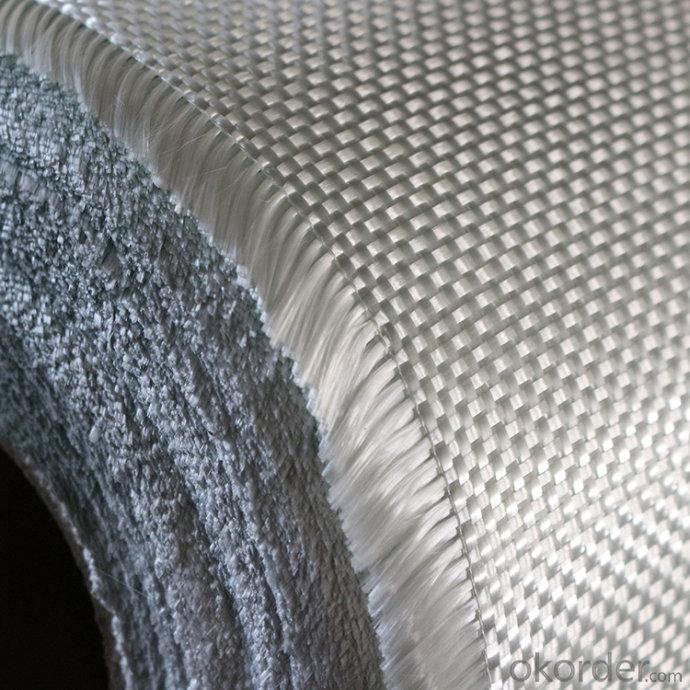
【Technical data】
Unit Weight (g/m2) | Warp | Weft | Moisture (%) | Loss on ignition (%) | Tensile strength on warp(N) | Tensile strength on weft(N) | ||
| Tex | Density (roving/250px) | Tex | Density (roving/250px) | |||||
| 600±8% | 1200±5% | 25±10% | 1200±5% | 25±10% | ≤0.2 | 0.4~0.8 | ≥4000 | ≥3850 |
| According to the standard GB/T 18370-2001 | ||||||||
- Q: Are fiberglass fabrics resistant to corrosion from chemicals?
- Fiberglass fabrics are generally resistant to chemical corrosion. The exceptional properties of fiberglass, such as its high resistance and inertness against chemicals, make it an excellent material for situations involving exposure to harsh chemicals. Industries like chemical processing, oil and gas, and wastewater treatment commonly utilize fiberglass fabrics, as they encounter a wide range of corrosive chemicals. The corrosion resistance of fiberglass fabrics stems from their composition of glass fibers, which are highly resistant to chemical attacks. Moreover, fiberglass fabrics can be coated with various protective coatings to further enhance their chemical resistance. Nonetheless, it is essential to note that the chemical resistance of fiberglass fabrics may vary depending on the specific chemical's type and concentration. Thus, it is advisable to consult the manufacturer or supplier for comprehensive information on the chemical resistance of fiberglass fabrics in precise applications.
- Q: Can fiberglass fabric be used for making stage backdrops?
- Stage backdrops can indeed be created using fiberglass fabric. This fabric is renowned for its durability and strength, which makes it suitable for a wide range of applications, including stage backdrops. It possesses exceptional heat, fire, and chemical resistance, making it a secure and dependable choice for theatrical settings. Moreover, fiberglass fabric can be easily customized and adorned with paint or prints, allowing for the creation of unique and visually captivating designs on the stage backdrop. Its lightweight quality also ensures effortless handling and installation. However, it is crucial to remember that proper treatment with fire-resistant coatings or finishes is necessary to guarantee safety in case of a fire. All in all, fiberglass fabric is a versatile material that can be effectively utilized in the creation of stage backdrops.
- Q: What are the different finishing options available for fiberglass fabric?
- There are several different finishing options available for fiberglass fabric, each with its own unique properties and uses. One common finishing option is coating the fiberglass fabric with a resin or polymer. This helps to enhance the fabric's strength and durability, making it more resistant to tears and abrasion. The coating can also provide added protection against chemicals, UV rays, and moisture. Another finishing option is laminating the fiberglass fabric with other materials, such as foam or felt. This creates a composite fabric that combines the strength and flexibility of the fiberglass with the added properties of the laminated material. This can be useful for applications where insulation, cushioning, or sound absorption is required. Additionally, fiberglass fabric can be treated with a fire retardant finish. This coating helps to reduce the fabric's flammability and can make it suitable for use in environments where fire safety is a concern. Some fiberglass fabrics are also available with a silicone or PTFE (polytetrafluoroethylene) finish. These finishes provide the fabric with enhanced heat resistance, as well as a non-stick surface that is easy to clean. This makes them ideal for applications such as insulation blankets, conveyor belts, or release liners. In summary, the different finishing options available for fiberglass fabric include resin or polymer coatings, lamination with other materials, fire retardant treatments, and silicone or PTFE finishes. The choice of finishing option will depend on the specific requirements of the application, such as strength, durability, heat resistance, or fire safety.
- Q: Can fiberglass fabric be used in low-temperature applications?
- Yes, fiberglass fabric can be used in low-temperature applications. It is known for its excellent thermal insulation properties, making it suitable for use in environments with low temperatures. Additionally, fiberglass fabric retains its strength and flexibility even in extreme cold, making it a reliable choice for various low-temperature applications such as insulation, cryogenic storage, and cold weather clothing.
- Q: How is fiberglass fabric painted?
- Various techniques can be used to paint fiberglass fabric. The initial step involves thoroughly cleaning the surface to remove any dirt, grease, or loose particles. Once the surface is clean and dry, applying a primer can enhance adhesion and promote better paint adherence to the fabric. Fiberglass fabric can be painted using different types of paint, including acrylic, latex, or oil-based paints. It is crucial to select a paint that suits the specific application and desired finish. There are three options for applying paint to fiberglass fabric: brush, roller, or spray gun. The choice depends on the fabric's size and desired finish. For smaller areas or a textured finish, a brush or roller is typically utilized. Conversely, a spray gun is more suitable for larger areas or when a smooth and even finish is desired. When applying the paint, it is essential to follow the manufacturer's instructions regarding application techniques, drying times, and recommended number of coats. It is generally advised to apply multiple thin coats rather than a thick coat to achieve a more even and durable finish. After painting, it is crucial to allow the paint to fully dry before using or handling the fiberglass fabric. The drying time can vary depending on the paint type and environmental conditions, ranging from a few hours to a few days. In summary, properly painting fiberglass fabric involves thorough surface preparation, selecting the appropriate paint, and utilizing the right technique. With adequate care and maintenance, the painted fiberglass fabric can maintain its color and finish for an extended period.
- Q: Waterproof method of glass fiber cloth for toilet
- Root canal sealant seal, cement smooth foot slip, waterproof paint brush when sticking glass cloth reinforced layer 1~2 layer. Similar measures near the floor drain.
- Q: Can fiberglass fabric be used for making gaskets or seals?
- Indeed, the utilization of fiberglass fabric is viable for the production of gaskets and seals. Renowned for its superior potency and durability, fiberglass fabric emerges as an optimal material selection for applications pertaining to gaskets and seals. Its capacity to endure elevated temperatures, withstand chemical substances, and provide insulation properties renders it suitable for deployment across a diverse range of sectors, encompassing automotive, aerospace, and manufacturing. Moreover, the versatility of fiberglass fabric permits effortless cutting and molding into various shapes and sizes, tailored to meet the specific requirements of individual gaskets or seals. Overall, fiberglass fabric showcases commendable sealing capabilities, thereby establishing itself as a dependable option for fabricating gaskets and seals.
- Q: Can fiberglass fabric be used for making air ducts?
- Yes, fiberglass fabric can be used for making air ducts. Fiberglass fabric is a versatile material that is commonly used in various industries, including HVAC. It offers several advantages for air duct applications. Firstly, fiberglass fabric is lightweight, which makes it easier to handle and install in comparison to other materials such as sheet metal. This can lead to faster and more cost-effective installation processes. Secondly, fiberglass fabric is non-porous, which means it is resistant to moisture, mold, and mildew. This is particularly important in air ducts as it helps to maintain indoor air quality by preventing the growth of harmful bacteria and fungi. Additionally, fiberglass fabric has excellent thermal insulation properties. It can effectively retain heat or cold air, which helps to improve energy efficiency by reducing heat transfer and minimizing energy losses. Moreover, fiberglass fabric is also known for its fire-resistant properties, making it a safe choice for air duct applications. It has a high melting point and does not emit toxic gases when exposed to fire, which can be crucial in ensuring the safety of the occupants in case of a fire incident. Lastly, fiberglass fabric is flexible and can be easily molded and shaped to fit different duct configurations, including bends and turns. This flexibility allows for easy customization and adaptation to various building layouts. Overall, fiberglass fabric is a suitable material for making air ducts due to its lightweight, non-porous, thermal insulation, fire-resistant, and flexible properties. However, it is important to ensure that the fiberglass fabric used for air ducts meets the necessary industry standards and regulations to ensure proper performance and safety.
- Q: Can fiberglass fabric be used for making electronic devices?
- Yes, fiberglass fabric can be used for making electronic devices. It is a versatile material that is commonly used as a substrate for printed circuit boards (PCBs) due to its excellent electrical insulation properties and high temperature resistance. The fiberglass fabric acts as a sturdy base for mounting and connecting electronic components, ensuring proper insulation and stability within the device.
- Q: Can fiberglass fabric be used for making boats?
- Yes, fiberglass fabric can be used for making boats.
Send your message to us
E-GLASS FIBERGLASS WOVEN ROVING FABRIC EWR600
- Loading Port:
- Qingdao
- Payment Terms:
- TT OR LC
- Min Order Qty:
- 100 kg
- Supply Capability:
- 1000000 kg/month
OKorder Service Pledge
OKorder Financial Service
Similar products
Hot products
Hot Searches
Related keywords
